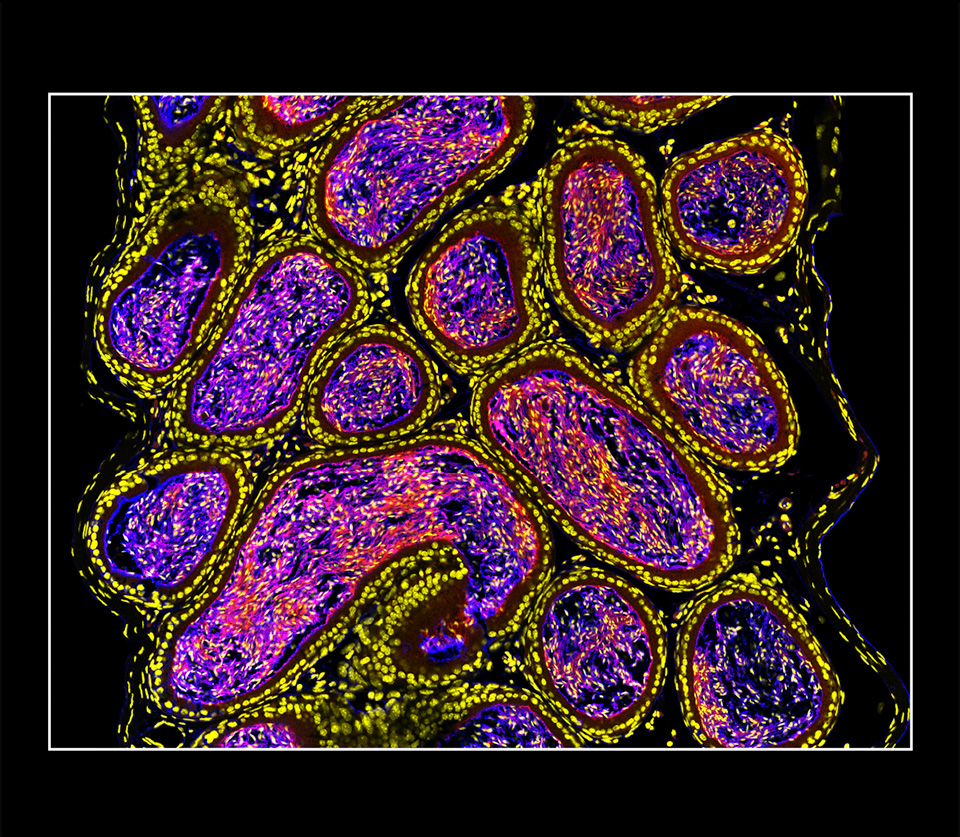
Derek Sung
Mouse Epididymis, 2017
Immunofluorescence confocal photomicrograph
Zeiss LSM 880 confocal microscope
Laboratory of Molecular Cardiology National Heart, Lung, and Blood Institute of the National Institutes of Health
Bethesda, Maryland, United States
The epididymis is a long, tortuous tube that sperm must travel through after leaving the testes. In a mouse, the epididymis can be up to a meter in length, and in humans, it can be up to six meters. During this journey, the sperm mature and acquire motility necessary for fertilization. The epithelium of the epididymis contains special structures, called stereocilia, that absorb fluid to create a current that propels the sperm forward. Mutations or defects in the epididymis can result in infertility. This epididymis came from a dissected mouse, was preserved in paraformaldehyde, embedded in paraffin, thinly sliced, and then stained for PNA (red/magenta), WGA (blue), and nuclei (yellow).
